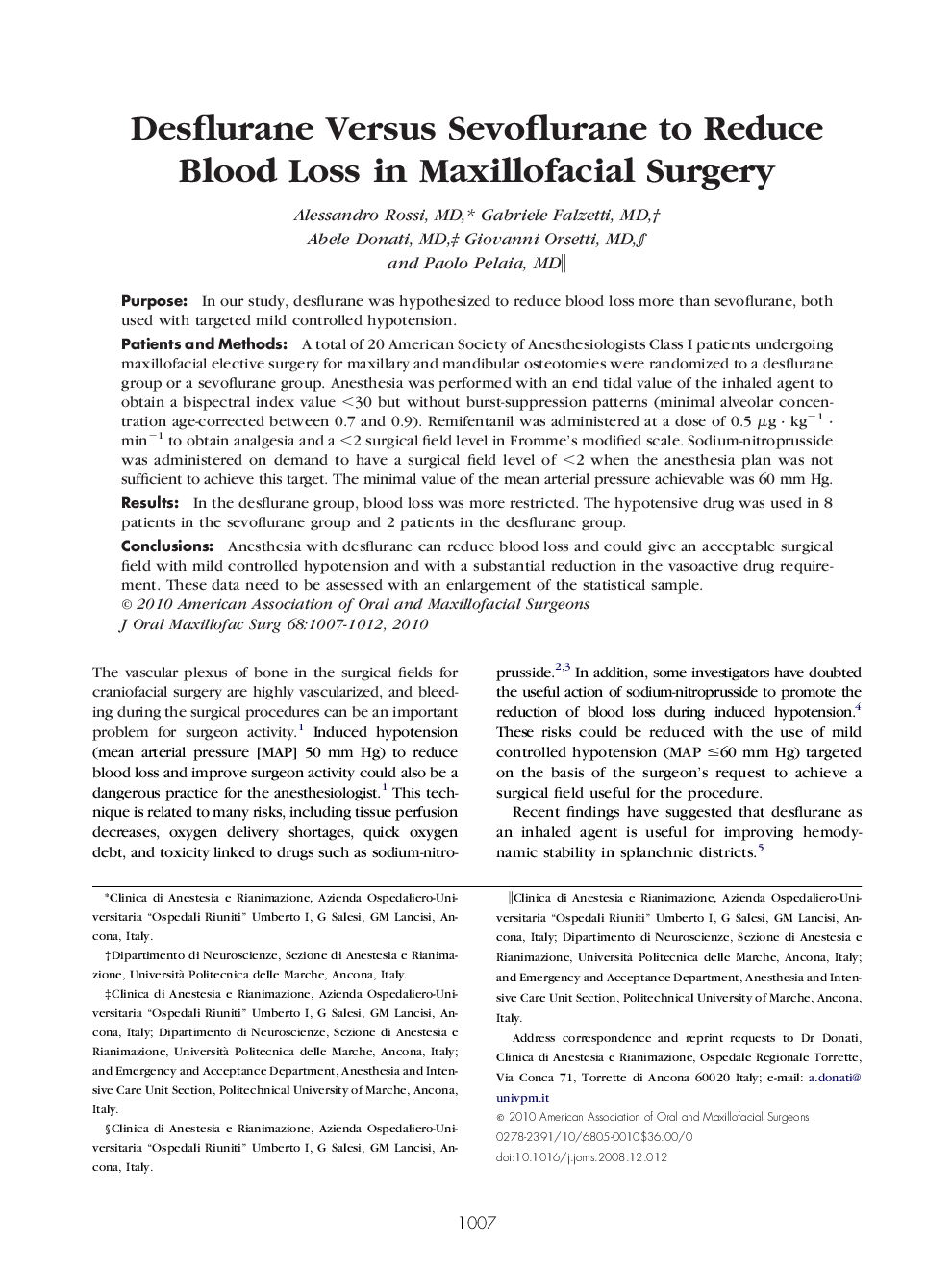| Article ID | Journal | Published Year | Pages | File Type |
|---|---|---|---|---|
| 3154998 | Journal of Oral and Maxillofacial Surgery | 2010 | 6 Pages |
PurposeIn our study, desflurane was hypothesized to reduce blood loss more than sevoflurane, both used with targeted mild controlled hypotension.Patients and MethodsA total of 20 American Society of Anesthesiologists Class I patients undergoing maxillofacial elective surgery for maxillary and mandibular osteotomies were randomized to a desflurane group or a sevoflurane group. Anesthesia was performed with an end tidal value of the inhaled agent to obtain a bispectral index value <30 but without burst-suppression patterns (minimal alveolar concentration age-corrected between 0.7 and 0.9). Remifentanil was administered at a dose of 0.5 μg · kg−1 · min−1 to obtain analgesia and a <2 surgical field level in Fromme's modified scale. Sodium-nitroprusside was administered on demand to have a surgical field level of <2 when the anesthesia plan was not sufficient to achieve this target. The minimal value of the mean arterial pressure achievable was 60 mm Hg.ResultsIn the desflurane group, blood loss was more restricted. The hypotensive drug was used in 8 patients in the sevoflurane group and 2 patients in the desflurane group.ConclusionsAnesthesia with desflurane can reduce blood loss and could give an acceptable surgical field with mild controlled hypotension and with a substantial reduction in the vasoactive drug requirement. These data need to be assessed with an enlargement of the statistical sample.
